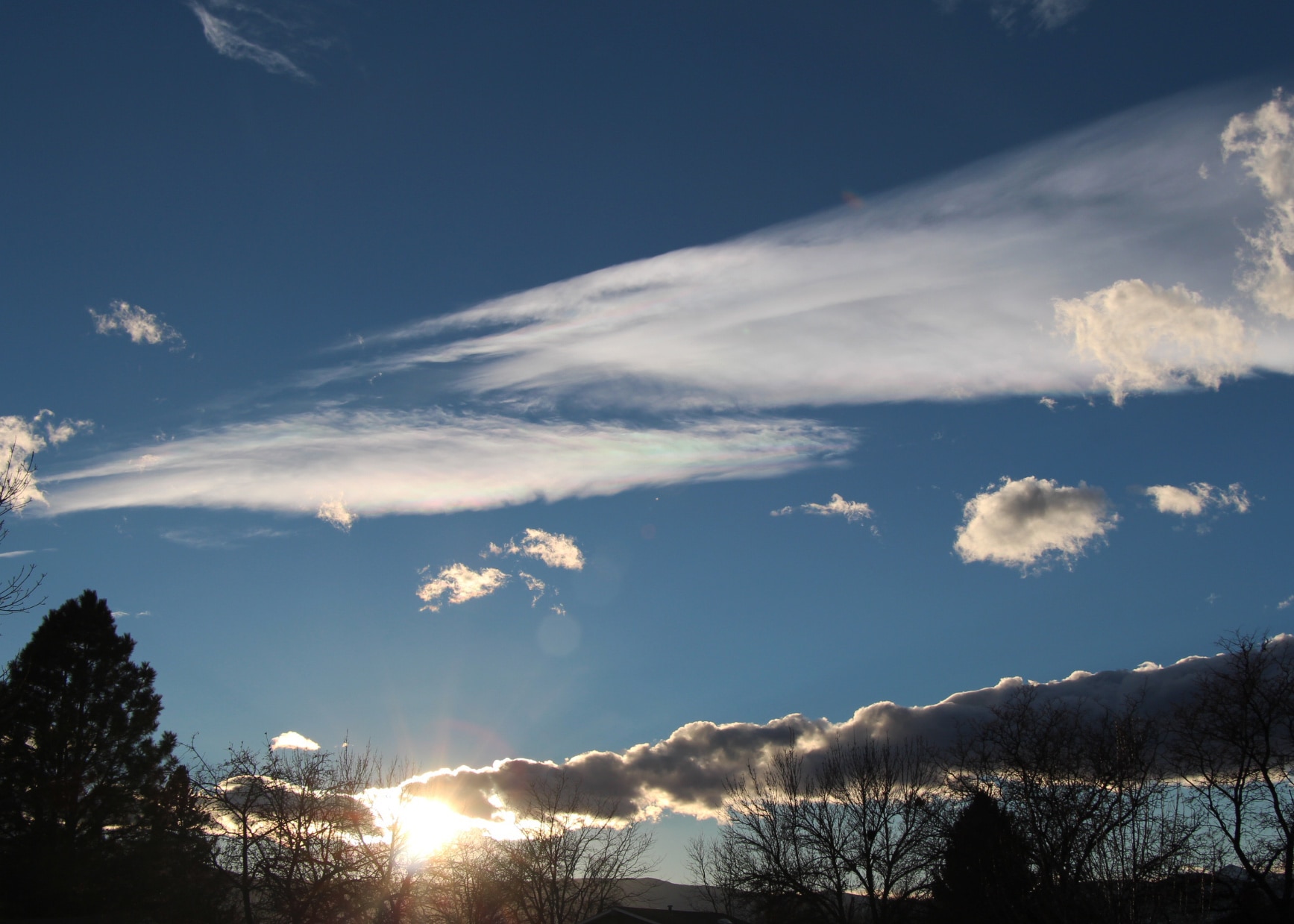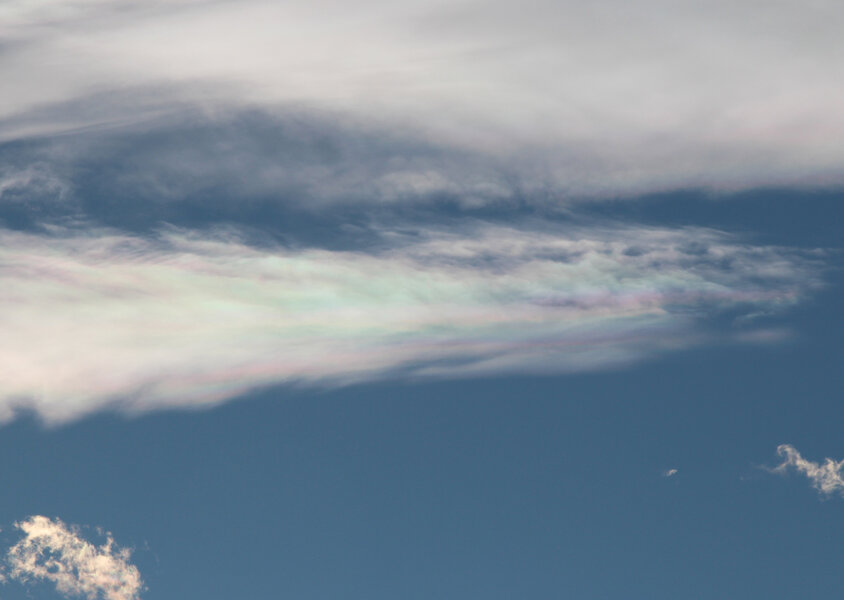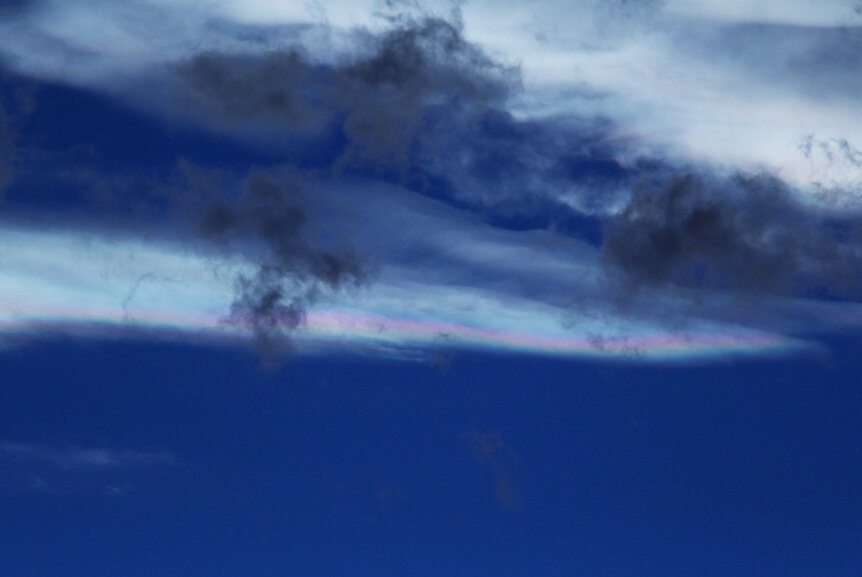Create a free profile to get unlimited access to exclusive videos, sweepstakes, and more!
The Magic—I mean Science—of Iridescence

Regular readers know I am a nebulaphile*—a lover of clouds. I’m fascinated by their beauty, their shapes, and of course the science behind them. Living in Boulder, Colo., is enabling; the mountains to the west provide wind patterns highly conducive to awesome and bizarre cloud formations (see Related Posts below).
We also get lots of interesting optical effects here, too. Sundogs, crepuscular rays, halos … when you mix sunlight and high-altitude water droplets and ice crystals, you get magic. One of the best and most wondrous of these are iridescent clouds.
I mentioned these recently when I took a video of the jaw-dropping mountain wave clouds over Denver. Sometimes, near the Sun, the clouds take on a various pastel hues, usually around their edges. The colors are not like what you see in a rainbow; instead they can be vibrant shades of pink, teal, and others.
My office window faces west, so I see them near sunset. On Jan. 11, I happened to glance out my window and see a long, flat cloud sculpted by winds. The edges of the cloud were glowing white and fringed with parallel stripes of pink and green! I grabbed my camera (a Canon T4i with an 18-135 mm lens, before you ask), ran outside, and took one photo after another.
At the top of this post is the wide view. Here’s a close-up:
You can see the alternating pink and greenish-teal stripes and some faint pink coloring to the cloud above it.
The cloud shape and color distribution changed minute by minute, almost by the second. Here’s another shot taken not long after, where I adjusted the brightness and contrast a bit to highlight the colors; in fact that’s more how it looked by eye than the original photo showed.
Although the colors were most obvious near the cloud edge, clouds all over that area of the sky were patchy with iridescence. In the lower cloud, you can also see a yellow layer, which was more obvious by eye. I remember a couple of years ago seeing ridiculously vivid layers of red, blue, yellow, pink, and green in patches all around the Sun. It was stunning.
Iridescence is a weird phenomenon. You need lots of tiny raindrops (or ice crystals) all the same size over a large portion of the cloud. In a rainbow, the lights goes into the droplets and gets bent (twice) to create colors. In iridescence, though, the light actually bends (diffracts) around the droplets. Different colors bend by different amounts, splitting the colors apart. The size of the raindrop needs to be roughly the same size as the wavelength of light, so when I say “tiny” I mean it: The drops must be less around a micron in size! A human hair, by the way, is about 100 microns in width, so these really are teensy drops.
But it’s more complicated than just that. The cloud also has to be what’s called optically thin; that is, mostly transparent so that on average a beam of light only hits one droplet and only gets bent once. If it hits multiple drops the colors get washed out. That’s why this happens more often near the edges of clouds, where they’re thinner. On top of that, the light waves interfere with each other, similar to how waves in a bathtub add together or subtract from each others’ wave heights as you wiggle around (and please, don’t deny you’ve ever done this playing in the tub; it’s fun, and educational!). These processes combine in complicated ways to produce these different colors.
When I search the Web for clouds like these, a term comes up which makes me chuckle: “rare.” They really aren’t; they’re common in the winter, especially around here in Boulder. Literally, as I’m drafting this post days after I took the pictures above, I looked out my window and saw more of them.
I see the term “rare” used for phenomena like sundogs and halos, too, but it’s easy enough to spot them many times in the winter. So I don’t think they’re all that rare. What is uncommon is for people to notice. People aren’t used to looking up.
So look up! There’s an entire sky over your head, and it’s wide and deep. It stretches from right above your eyeballs to as far as the biggest and most sensitive telescopes can see. The whole Universe is right there hanging over your noggin.
Look up and see it.
*Yes, I made that word up. It’s not like it’s the first time.
















